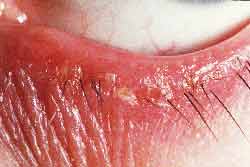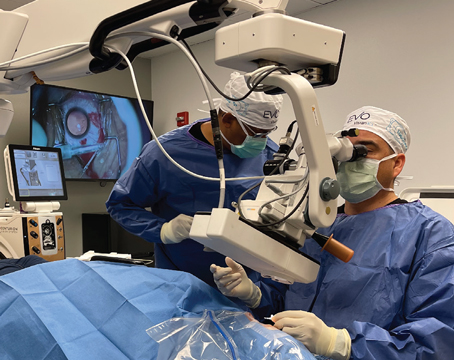A BATTERY OF VISUAL EXAMS AND personal questions has become standard in the prescreening of candidates for laser vision correction. This list has developed over time as surgeons have learned more about variables such as pupil size and as technology has delivered upgrades like the wavefront-customized platforms. Catching the "abnormal" cornea or the demanding personality preop has become easier, but nothing is foolproof. In this article, LASIK surgeons share screening methods they"ve assembled after years of surgery. They"ll also discuss their strategies for turning not-so-good candidates for laser surgery into great ones.
Measuring the Cornea
There"s a lot of concern in the laser vision correction world about the "abnormal" cornea, due in great part to the postop risk of corneal ectasia. Chicago surgeon Mitchell Jackson stresses the importance of corneal topography and says that obviously the main thing to look for is keratoconus, even forme fruste keratoconus. For this, he prefers the Orbscan: "You may pick up as much as 13 percent of people you screen with an abnormal posterior float. You wouldn"t see that if you didn"t have topography at all." He admits, however, that a surprise ectasia can happen even if you think you"ve done all the prescreening that you could. "Even with a normal Orbscan, normal corneal thickness, normal slit-lamp exam and no history of contact lens warpage, you can still get ectasia," he explains. "In these cases, I think it"s a genetic defect in the corneal tissue elasticity. A small percentage of the population has this, and until we have a technology to quantitatively measure the elasticity of the cornea, it may be responsible for some surprise ectasia cases."
The "abnormal cornea" is a nebulous term, agrees Sandy T. Feldman, MD, of San Diego. These corneas require close attention to be identified in a prescreening exam. "An abnormal cornea could have a scar on it. It could be just outside the norm, meaning it"s very steep or very flat. It could have some irregularity from contact lens wear. Or, it could have a surface abnormality such as dryness, from either dry-eye syndrome or external disease problems such as blepharitis or rosacea," she illustrates.
None of this may completely exclude a person from laser surgery, she explains, but it must be noted and addressed before the candidate can move farther along in the process. "As a cornea specialist, I know that some scarred corneas are amenable to treatment," says Dr. Feldman. "I might do LASIK, or a surface procedure, knowing that the outcome may not be perfect. The patient may have a mild irregularity on topography that stems from a little scar. I would perform LASIK. Excellent uncorrected acuity should be achieved."
Measuring the Cornea
There"s a lot of concern in the laser vision correction world about the "abnormal" cornea, due in great part to the postop risk of corneal ectasia. Chicago surgeon Mitchell Jackson stresses the importance of corneal topography and says that obviously the main thing to look for is keratoconus, even forme fruste keratoconus. For this, he prefers the Orbscan: "You may pick up as much as 13 percent of people you screen with an abnormal posterior float. You wouldn"t see that if you didn"t have topography at all." He admits, however, that a surprise ectasia can happen even if you think you"ve done all the prescreening that you could. "Even with a normal Orbscan, normal corneal thickness, normal slit-lamp exam and no history of contact lens warpage, you can still get ectasia," he explains. "In these cases, I think it"s a genetic defect in the corneal tissue elasticity. A small percentage of the population has this, and until we have a technology to quantitatively measure the elasticity of the cornea, it may be responsible for some surprise ectasia cases."
The "abnormal cornea" is a nebulous term, agrees Sandy T. Feldman, MD, of San Diego. These corneas require close attention to be identified in a prescreening exam. "An abnormal cornea could have a scar on it. It could be just outside the norm, meaning it"s very steep or very flat. It could have some irregularity from contact lens wear. Or, it could have a surface abnormality such as dryness, from either dry-eye syndrome or external disease problems such as blepharitis or rosacea," she illustrates.
None of this may completely exclude a person from laser surgery, she explains, but it must be noted and addressed before the candidate can move farther along in the process. "As a cornea specialist, I know that some scarred corneas are amenable to treatment," says Dr. Feldman. "I might do LASIK, or a surface procedure, knowing that the outcome may not be perfect. The patient may have a mild irregularity on topography that stems from a little scar. I would perform LASIK. Excellent uncorrected acuity should be achieved."
|
|





